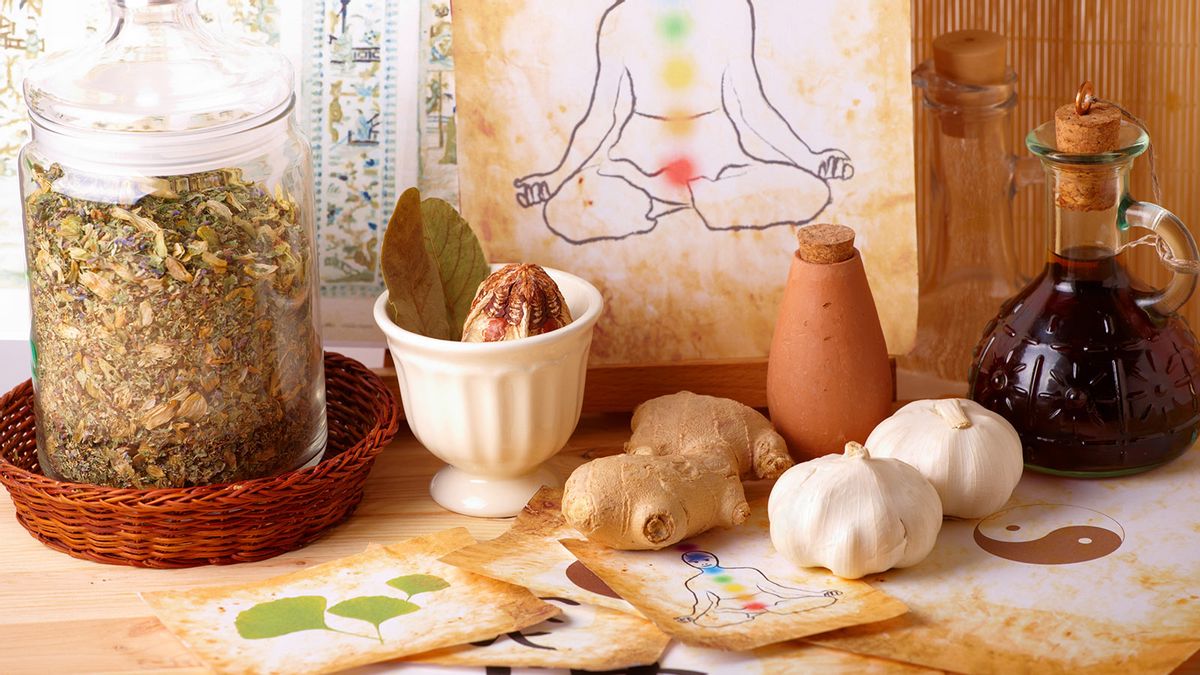The basic philosophy of Ayurveda, the ancient Indian science, is to balance the mind, body and spirit. “Your body is not about what you eat but about what you can digest,” says Amrita Kaur, a Mumbai-based Ayurveda Nutrition Consultant. It is not in jest that she says this; “our health is largely dependent on what we ingest.” With modern-day lifestyle diseases becoming rampant, people are turning to the ancient Indian science of Ayurveda for remedies.

Ayurveda is built around the five elements of ether, air, fire, water, and earth. The unique combination of these elements come together to make up the three basic doshas—the constitutions of Vata (air), Pitta (fire), and Kapha (earth).
Good health is considered to be a perfect balance of three doshas. Let’s look at what these doshas are and how they can help you to understand your personality and your body’s natural tendencies.
What are Doshas?
Although the literal translation of dosha is ‘a fault’, in Ayurveda, dosha refers to biological energies comprising of the five elements—earth, fire, water, air and ether.
Air and Ether make Vata which is the energy of movement and the force governing all biological processes. It is often called the king of doshas since it governs the body’s greater life force and gives motion to Pitta and Kapha.
Fire and Water make Pitta which is the energy of digestion and metabolism in the body. It most closely resembles the element of fire, but the liquid nature of the digestive enzymes presents its element of Water.
Water and Earth make Kapha which is the energy of building and lubrication that provides the physical form of the body and smooth functioning of all its parts.
Each of these doshas has a specific set of functional roles to play in the body and every human being is made of all three doshas or tridoshas. “They govern all physical and mental process and give every living being their individual blueprint providing optimum health and fulfillment in life,” explains Dr Manoj Kutteri, Wellness Director at Atmantan Wellness Centre.
Also known as prakruti or innate nature, each of us has one dominant dosha that has a specific hub in our body. Vata is located below the umbilical region, Pitta between the cardiac and umbilical region, and Kapha above the cardiac region. More enigmatically, doshas have the ability to “detect imbalances in our constitution even before the manifestation of a disease. They derive the tendency of our mind and body towards a particular disease or consciousness,” says Dr Arun Pillai, Wellness Director of Dharana at Shillim.
Understanding your dosha
Kaur further explains, “doshas can be identified in three ways: by seeing or darshana, where you can visibly see how your body behaves in its natural environment. By asking questions or prashna and by sparshana, conducted by an Ayurvedic doctor who examines your pulse (also known as nadi pariksha).”
With the powers to control health and overall well-being, it is important to understand the balance of doshas in our bodies and address any imbalance. These imbalances are as natural as the doshas themselves; it is known as vikruti. They are caused due to the increased or decreased state of your dominant dosha. “Increased dosha is present in an excess proportion also referred to as aggravated or excess state and Decreased is when there is a deficiency of one dosha also referred to as reduced or depleted state,” explains Dr Pillai.
Vata (Air): Those with dominant Vata dosha tend to be thin and mentally and physically active. Vata types are dominated by fire and tend to be strong, intense, and have a medium build and endurance. “They tend to be hot-headed with sensitive digestion,” says Kaur.
Kapha (Earth): Those with dominant Kapha dosha tend to be naturally athletic as long as they exercise regularly to manage their tendency to gain weight. “You can’t rush them. If they don’t find mental and emotional stimulation, they are prone to mental health issues,” she continues.
Pitta (Fire): Those with dominant Pitta dosha have a medium build and endurance. Their skin has a reddish glow and their hands are always warm. This is because they are dominated by fire. As a result, they have a good digestion system. “Hangry is a term coined for them, they feel hungry at short intervals, and when they can’t satiate themselves they get angry,” Kaur adds.
A human body can’t be without the three doshas. We need all three doshas for our bodies to function optimally and each has a specific role to play. “Vatta helps with movement in the body, circulation, respiratory, digestion and bowel movements. Metabolism is a pitta function, while cell structure, bones and body forms are functions of kapha,” she elaborates.
Diet and dosha
Food or ahara is one of the three main tenets of Ayurveda. Texts on Ayurveda going back as far as 300 BC-700 AD have dedicated entire sections on diet and its impact on health and well-being. Charaka Samhita, considered a seminal text on the subject, shares descriptions of food classification based on their taste, therapeutic qualities, etc., as well as food safety and different incompatibilities based on tastes, processing, dose, time, place, etc.
According to Ayurveda, doshas determine which foods you should eat to maintain inner balance. Vata dosha recommends warm, moist, and grounding foods, while Pitta dosha focuses on cooling, energising foods and limited spices and Kapha dosha favour fruits, vegetables, and legumes. “Each food item has either aggravating or pacifying action or balancing action on one or more doshas. To keep the homeostasis of doshas, Ayurveda has described specific diets. Proper planning of the diet can maintain our body,” says Dr Kutteri.
Dr Pillai shares a few basic measures that you can adopt:
- Understand your spice tolerance level as per your dosha
- Consistency of the food best suited for you
- Note the vegetables that create an imbalance
- Reaction to the consumption of citrus
- Quantity ratio of proteins
- Reaction to caffeine
A body’s dosha changes according to seasons and eating seasonally is key to maintain balance. “Doshas tend to alter their course of reaction given different stimuli. For instance, the response generated in summer will vary from the response generated in winter. Hence the consumption of ingredients that are produced seasonally act as a stimulus to create the right balance,” says Dr Kutteri.
It may be in vogue to eat ‘seasonal,’ but Ayurveda has its feet firmly planted in this belief. During summer, Kaur explains, we need cooling foods since the heat aggravates the pitta dosha. So, rice, milk, ghee, sugar, grapes, coconut water are advised. During the monsoon, due to the drop in temperature sweet, sour, salty food and drinks are preferred. “Food should be hot dry, fatty and easily digestible. Preserved rice, wheat, barley, warm soups are advised,” explains Dr Pillai. In the winters, when there is a dry chill in the air, a pitta increasing diet is recommended, which are hot, sweet, sour, salty food.
Dosha Dos and Don’ts
Dos
- Food should be tasty, warm, qualitative, unctuous and easily digestible
- Eat neither too fast nor too slow
- Eat only when hungry, after the last meal is digested
- The daily diet should include all tastes – sweet, sour, salty, pungent, bitter and astringent
- Eat nourishing food and food suitable to particular constitution, mental and emotional temperament
- Focus on food while eating
- Eat in a comfortable sitting position
- Eat in a pleasant surrounding with utensils and preparation with individual choice
Don’ts
- Foods contrary to each other in action, eg. Milk and Fish, Radish and Fish, Honey and Ghee, etc
- Eat in a hurry without being mindful about it
- Eat when emotionally upset or not too hungry
- Too much of any taste is not good for health




